The Radeon RX 6800 and RX 6800 XT have already been launched, the Radeon RX 6900 XT will follow on 08.12.2020. And what’s underneath? Nvidia blows out one card after the other with relish, because the GeForce RTX 3070 was already launched, the RTX 3060 Ti follows on 01.12.2020, the RTX 3060 even later. And how’s AMD? The Radeon RX 6700 XT (and later the RX 6700) is a promising iron in the fire, which, depending on the beat, can be expected to be about two-thirds of the performance of the RX 6800. But of course, this depends primarily on the GPU clock and permissible TGP.
I have here and now exclusively for you two board partner BIOSes (thanks to Patrick Schur!) of the Navi22 cards, which I could already read and rate. But I will come to that in a moment, because the assumed clock rates are once again an increase compared to what we have seen so far on the board partner cards with Navi21. First of all, here is an inventory of what we already know:
| Name | RX 6900 XT | RX 6800 XT | RX 6800 | RX 6700 XT |
|---|---|---|---|---|
| Chip | Navi 21 XTX | Navi 21 XT | Navi 21 XL | Navi 22 XT |
| Chip size | 520 mm² | 520 mm² | 520 mm² | n/a |
| Shader Cluster | 80 | 72 | 60 | 40 |
| Shaders/TMUs/ROPs | 5.120/320/128 | 4.608/288/128 | 3.840/240/96 | 2560/192/64 |
| RT Units | 80 | 72 | 60 | 40 |
| Infinity Cache MB | 128 | 128 | 128 | n/a |
| GPU Game Clock MHz | 2015 | 2015 | 1815 | n/a |
| FP16 TFLOPS | 41.27 | 37.14 | 27.88 | 23.04 |
| FP32/FP64 TFLOPS | 20.63/1.29 | 18.57/1.16 | 13.94/0.87 | 11.52/0.72 |
| Fillrate Mtex/Mpix per sec. | 644.8/257.9 | 580.3/257.9 | 435.6/174.2 | 432/144 |
| L2 Cache MB | 4 | 4 | 4 | 3 |
| Memory interface | 256-bit | 256-bit | 256-bit | 192-bit |
| Memory Speed Gbps | 16 | 16 | 16 | 16 |
| Memory | GDDR6 | GDDR6 | GDDR6 | GDDR6 |
| Bandwidth GB/s | 512 | 512 | 512 | 384 |
| Memory Capacity GB | 16 | 16 | 16 | 12 |
| PCIe connectors | 2× 8-pin | 2× 8-pin | 2× 8-pin | 1× 8-pin |
| TBP Watts | 300 | 300 | 250 | n/a |
| Launch price (UVP) | 999 Euro | 649 Euro | 579 Euro | n/a |
Enormous GPU clock rates expected – 2 board partner BIOSes in comparison
On what we can expect from Navi Flounder (Navi22), two very different board partner BIOSes now provide information. One of the two BIOSes is rather moderately designed and could well be the reference, the other one uses a much higher TGP and should therefore also allow higher clock rates. Also the specifications for the fans are interesting here, because one sees here for BIOS 1 rather a cheaper graphic card, while the presumed OC model should be equipped clearly better.
But let’s first come to the PowerPlay specifications, which are identical for both graphics cards. The slider in the Wattman now goes up to very theoretical 2950 MHz, the maximum memory clock is set to 1075 MHz as a simple value (slider 2150 MHz effective, i.e. x2). The maximum power limit can be set to +15%, but this refers to the TGP stored in the BIOS. If this increases, then the final value is also correspondingly higher. Also the GFX maximum increases compared to the RX 6800 XT reference to now 2854 MHz. You probably won’t reach that, but it will certainly go much higher than with Navi21.
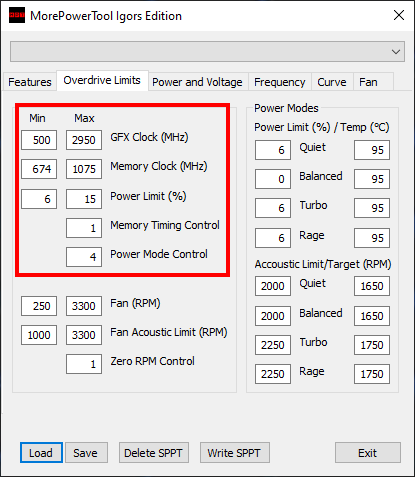
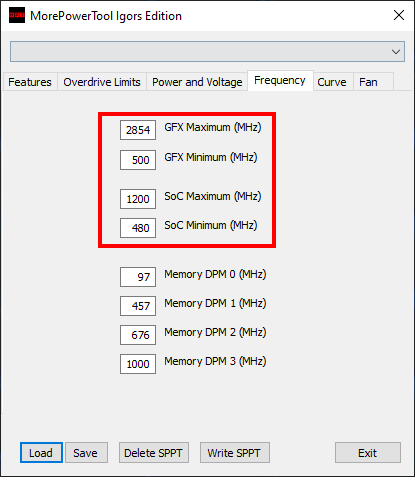
Let us now come to the first differentiated. The BIOS 1 (left) looks much more modest in power consumption. The 186 watt TGP (for GPU and memory together) should also be above but still closer to the reference and end at a TBP of about 210 to 220 watts, while the card with the BIOS 2 (right) can grab a whopping 25 watts more and then already scratches at the 250 watt mark at the TBP. Don’t forget: in both cases, up to 15% can be added here (Wattman). Now let’s do the math. Based on the shaders, I had estimated about 67% of the power of a Radeon RX 6800 at the corresponding clock rates.
The Radeon RX 6800 has a TGP of 203 watts as reference card. The 186 watts of the BIOS 1 would therefore be 92% of the TGP, which also suggests an OC BIOS in view of the smaller memory (12 instead of 16 GB GDDR6). The BIOS 2 is even clearly above what AMD already gives the RX 6800 reference card! That’s a little bit of violent action, but we’ll see what kind of performance comes out in the end. By the way, both cards have 1.2 Volt as GPU voltage, also more than the RX 6800 and RX 6800 XT.
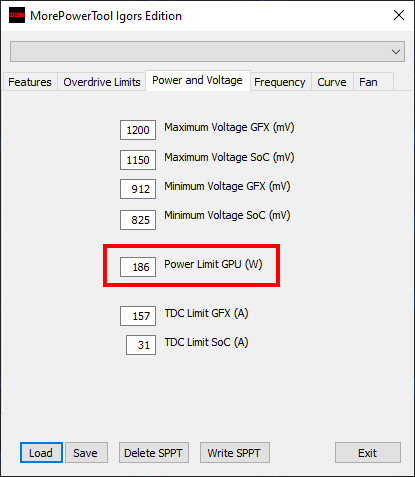
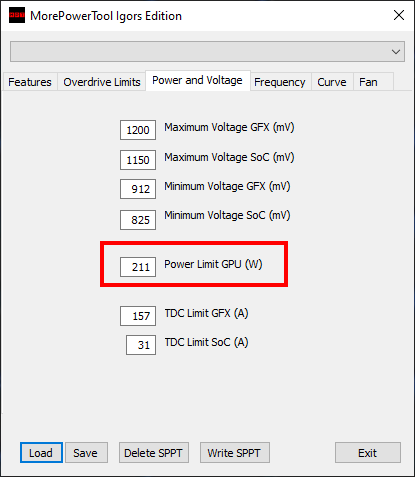
The simple card with the BIOS 1 looks like a 1-fan solution, whose small whirl has to whirl around properly in accordance with the GPU clock. The 2300 rpm for the Acoustic Limit is really a lot, especially since the 80 °C tjunction is still set quite low as a fan target. The other card looks better and quieter, despite higher TGP. The 1700 rpm already sounds a lot more bearable on paper and the tjunction of 95°C should also equalize the whole fan curve a bit and not let it rise so steeply.
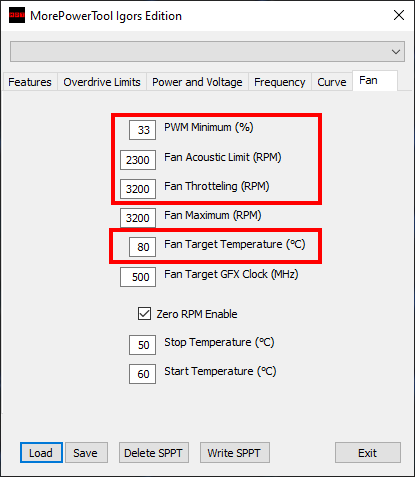
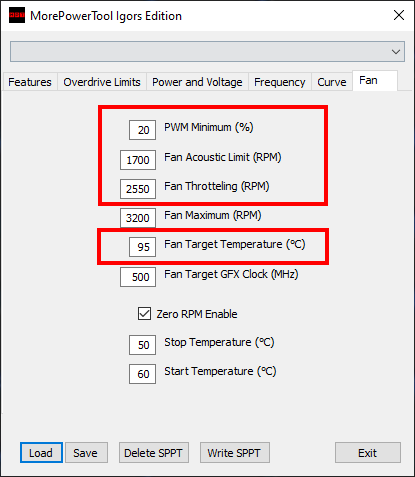
Interim conclusion
So either these two small cards are overclocked power dwarves and wild barrel organs with immensely high clock rates, far above the sweet spot and the reference target, or Navi22 would have to work much more inefficiently than expected, which is rather unlikely. So you can rather assume that the board partners, whose name I hide, have put on a little bit of the electric crowbar to attack at least the upcoming GeForce RTX 3060 Ti or rather the RTX 3060. One can hardly reach the RTX 3070 in such a way, despite brutally high clock rates. Especially since the chip itself is also reduced in size compared to Navi21 and even the video encoder is supposed to be affected.
If everything goes wrong, the GeForce RTX 3070 and maybe even the RTX 3060 Ti would hardly have any real competition and at AMD there would be a gap of almost 25% between the RX 6800 and RX 6700 XT. Not a good idea, as it seems, especially since one expects a RRP of about 400 euro for a GeForce RTX 3060 Ti. If there is no pressure from AMD, it should be difficult to keep this price as low as it is. Unfortunately. But of course all this also has the usual speculoos taste. Let us be surprised for once! Perhaps everything comes nevertheless differently, than Jensen thinks, who placed the coming RTX 3060 Ti surely very consciously in such a way and still holds back the RTX 3060.













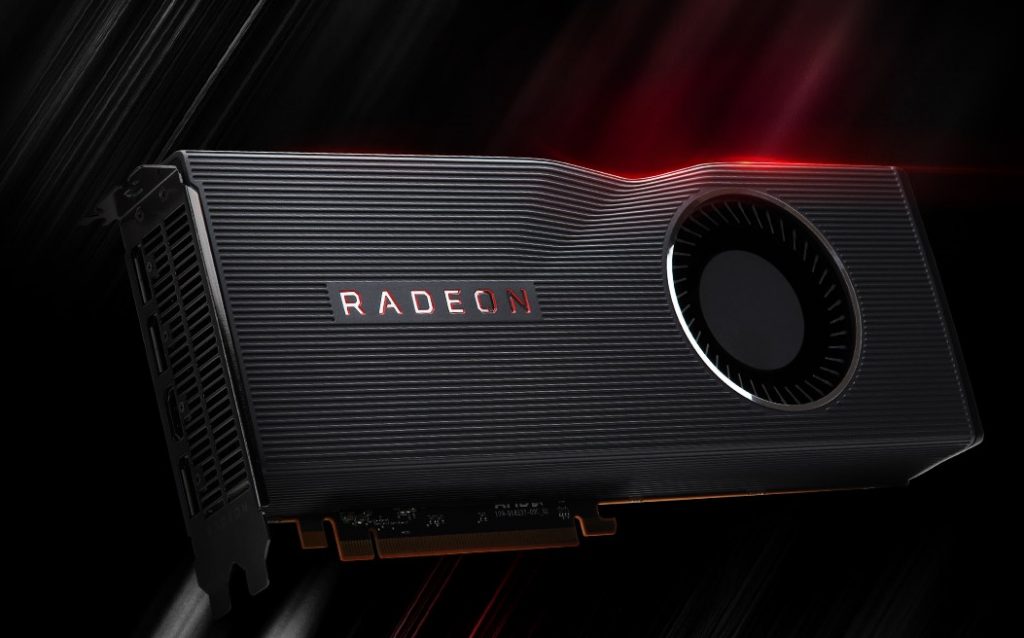


















Kommentieren